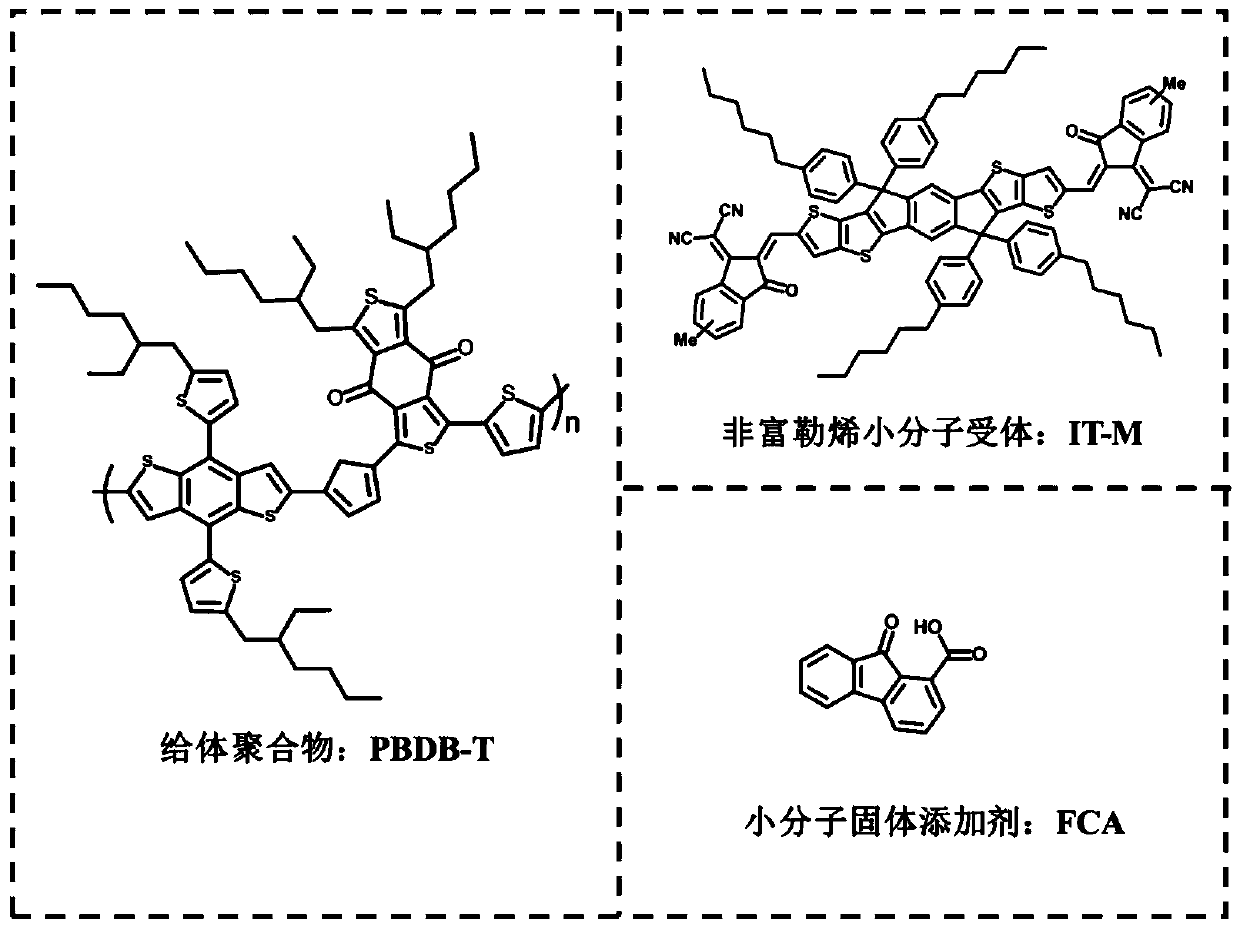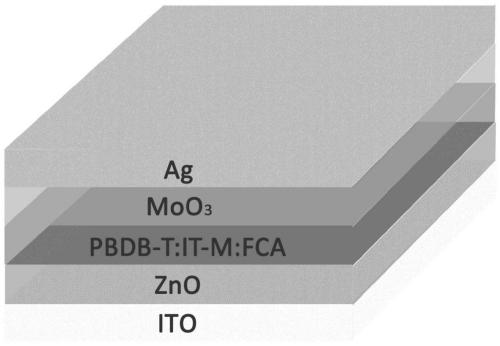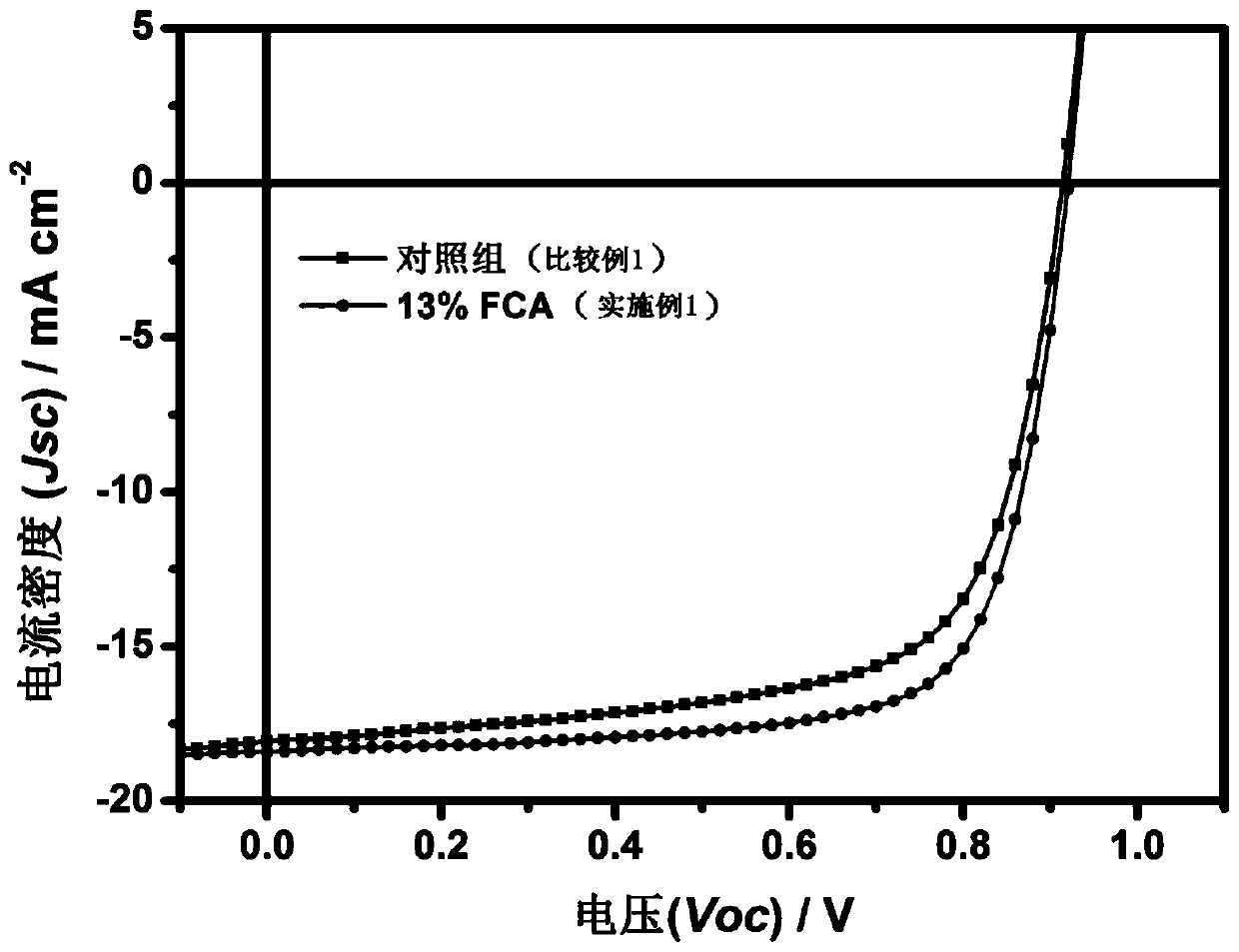Solid additive for organic polymer solar cell
A technology of solar cells and solid additives, applied in the direction of electric solid devices, circuits, photovoltaic power generation, etc., can solve problems such as difficult to remove, poor appearance, and no adjustment effect
- Summary
- Abstract
- Description
- Claims
- Application Information
AI Technical Summary
Problems solved by technology
Method used
Image
Examples
Embodiment 1
[0031] Embodiment 1: with figure 1 The two materials PBDB-T and IT-M shown in are used as the active layer material of the blended organic polymer solar cell device, and the structure of the additive 9-fluorenone-1-carboxylic acid (hereinafter referred to as FCA) is shown in figure 1 . Among them, the bandgap (E g ) is 1.80eV; non-fullerene small molecule acceptor material band gap (E g ) is 1.6eV.
[0032] ITO / ZnO(30nm) / PBDB-T:IT-M:FCA(100nm) / MoO 3 (8.5nm) / Ag(100nm) device structure such as figure 2 shown. The content of the solid additive FCA in the active layer of the device accounts for (mass percentage) 13%, based on the weight sum of PBDB-T and IT-M. The device preparation process is as follows:
[0033]1. The ITO (transparent electrode) glass substrate is first cleaned with a detergent, and then rinsed with tap water, deionized water, and ethanol in order to remove surface grease and dust. Afterwards, deionized water, acetone, and isopropanol were used to sonic...
PUM
| Property | Measurement | Unit |
|---|---|---|
| Thickness | aaaaa | aaaaa |
| Bandgap | aaaaa | aaaaa |
| Thickness | aaaaa | aaaaa |
Abstract
Description
Claims
Application Information
 Login to View More
Login to View More - R&D
- Intellectual Property
- Life Sciences
- Materials
- Tech Scout
- Unparalleled Data Quality
- Higher Quality Content
- 60% Fewer Hallucinations
Browse by: Latest US Patents, China's latest patents, Technical Efficacy Thesaurus, Application Domain, Technology Topic, Popular Technical Reports.
© 2025 PatSnap. All rights reserved.Legal|Privacy policy|Modern Slavery Act Transparency Statement|Sitemap|About US| Contact US: help@patsnap.com



